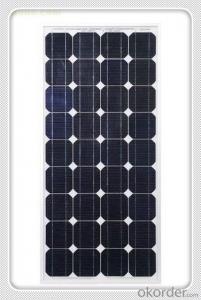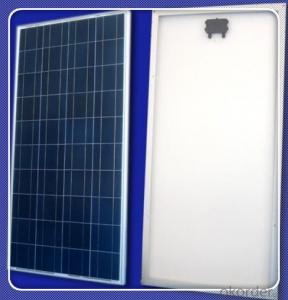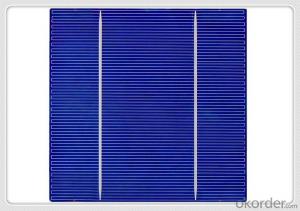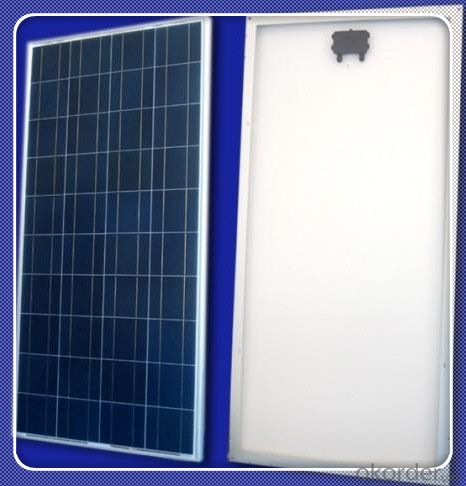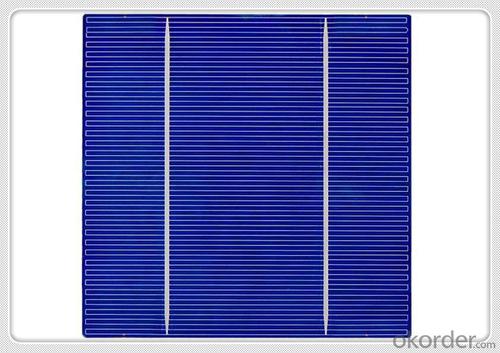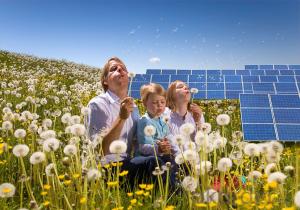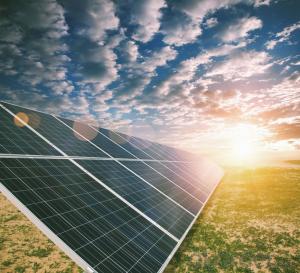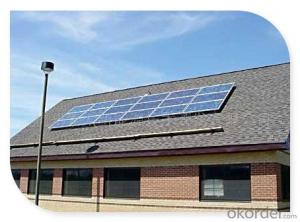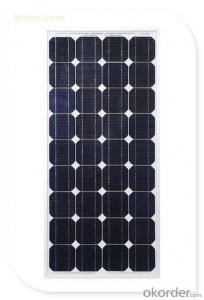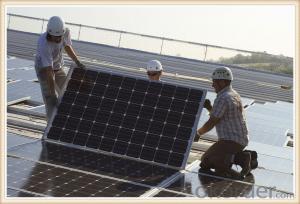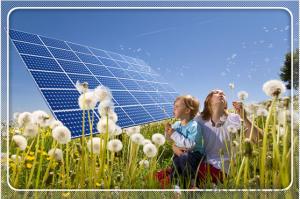Alliant Energy Solar Panels:85w Efficiency Chinese Solar Panels 5-200w for Sale
- Loading Port:
- China main port
- Payment Terms:
- TT OR LC
- Min Order Qty:
- 10000 watt
- Supply Capability:
- 100000 watt/month
OKorder Service Pledge
OKorder Financial Service
You Might Also Like
Specification
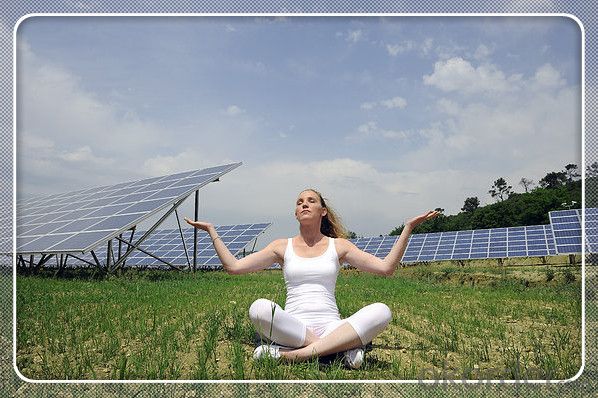
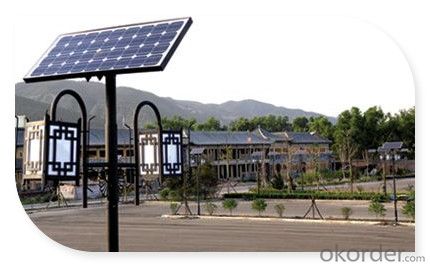
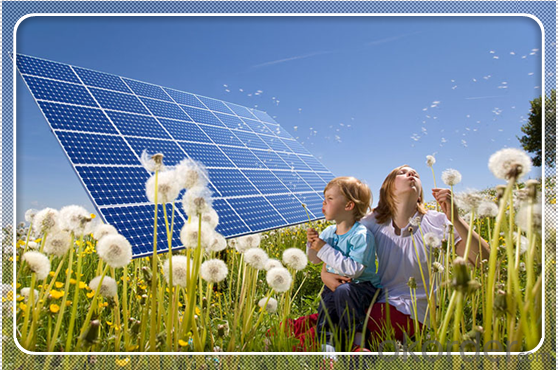
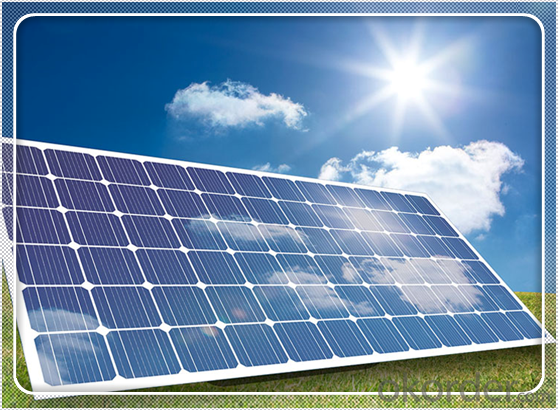
Solar Module Introduction
Solar Module is the core part of solar PV power systems, also is the highest value part of it. The function of Solar Module is to convert the sun's radiation to electrical energy, or transfer it to battery and store in it, or to drive the load running.
The Product has been widely used in space and ground, it mainly used for power generation systems, charging systems, road lighting and traffic signs areas. It could offer a wide range of power and voltage, and with high conversion efficiency, and long service life.
Solar modules use light energy (photons) from the sun to generate electricity through the photovoltaic effect. The majority of modules use wafer-based crystalline silicon cells or thin-film cells based on cadmium telluride or silicon. The structural (load carrying) member of a module can either be the top layer or the back layer. Cells must also be protected from mechanical damage and moisture. Most solar modules are rigid, but semi-flexible ones are available, based on thin-film cells. These early solar modules were first used in space in 1958.
Electrical connections are made in series to achieve a desired output voltage and/or in parallel to provide a desired current capability. The conducting wires that take the current off the modules may contain silver, copper or other non-magnetic conductive transition metals. The cells must be connected electrically to one another and to the rest of the system. Externally, popular terrestrial usage photovoltaic modules use MC3 (older) or MC4 connectors to facilitate easy weatherproof connections to the rest of the system.
Secification
Model Type | |
Peak Power-Pmax(W) | 5-200W |
Open Circuit Voltage-Voc(V) | 44.2 |
Maximum Power Voltage-Vmp(V) | 36 |
Short Circuit Current-Isc(A) | 5.4 |
Maximum Power Current-Imp(A) | 5 |
Maximum System Voltage | 1000V DC |
Maximum Series Fuse Rating | 10A |
Power Tolerance | -1~+3% |
Temperature Coefficients of Pmax | -0.45%/℃ |
Temperature Coefficients of Voc | -0.348%/℃ |
Temperature Coefficients of Isc | 0.031%/℃ |
Nominal Operating Cell Temperature | 44.5±2℃ |
Standard Testing Condition(STC) | Irradiance:1000W/m²;Temperature:25℃;AM=1.5 |
Qualification Test Parameters | |
Operating Temperature | -40℃~+85℃ |
Storage Temperature | -40℃~+85℃ |
Pressure Bearing | ≥5400Pascal/m² |
Wind Bearing | ≥5400Pascal/m² |
Mechanical Characteristics | |
Cell Size | Mono 125*125mm±0.5 |
No.of Cells | 72pcs(6*12) |
Dimension | 1580*808*40mm |
Weight | 15.5Kg |
Glass | 3.2mm High Transmission,Low Iron |
Frame | Anodized Aluminum Alloy |
Junction Box | IP65Rated |
Internal Diodes | 3 Bypass Diodes |
Cable | 1*4.0mm² Length 900mm |
Images
Packing & Shipping:
We have rich experience on how to pack the panels to make sure the safety on shipment when it arrives at the destination.
The normal size is packed by 25pcs/ carton / pallet. Paper carton for FCL shipping and wood carton for LCL shipping.
Warranty:
For c-Si panel: 25years output warranty for no less than 80% of performance, 10 years output warranty for no less than 90% of performance. Free from material and workmanship defects within 5 years.
For a-Si panel: 20 years output warranty for no less than 80% of performance, 10 years output warranty for no less than 90% of performance. Free from material and workmanship defects within 2 years.
FAQ:
(1)What price for each watt?
It depends on the quantity, delivery date and payment terms.
(2)What is your size for each module? Can you tell me the Parameter of your module?
We have different series of panels in different output, both c-Si and a-Si. Please take the specification sheet for your reference.
(3)Can you provide the peripheral products of the solar panels, such as the battery, controller, and inverter? If so, can you tell me how do they match each other?
Actually we are only manufacturer of solar panels, but we could try to source them for you in China if you need. We could provide you an optimal system design to instruct you how to install.
(4)Do you have the CE, TUV, UL Certification?
We’ve already passed all the tests, and any certificate is available.
(5)Have you ever sold your products to companies in my country?
Of course, we have customers in all general PV markets, but I think we should expand our market share along with the market growth.
(6)When did your company set up? You are a new company, how can I believe your quality?
We entered into Solar PV industry in 2005, now we have several plants in manufacturing of a-Si and c-Si panels, and our capacity is 220MW per year. Till now we have already passed all the tests by authorized laboratories, e.g. TUV, VDE, UL.
(7)Can you help us install the module if we cooperate with you?
We haven’t entered into installation sector, but we have the plan in near future.
(8) How do you pack your products?
We have rich experience on how to pack the panels to make sure the safety on shipment when it arrives at the destination.
(9) Can you do OEM for us?
Yes, we can.
(10)Can we visit your factory?
Surely, I will arrange the trip basing on your business schedule.
- Q: I am confused. I am planning to build a simple 2Watt solar system to power some lights in my house. . I wonder if it is possible to power up a 2Watt bulb using 2Watt solar power?2. Normally, when we are reading the power rating of a bulb, we will read the wattage, so what about the voltage and current rating?3. If the current is insufficient, will the bulb light up?I am having a solar panel that can output 2W power but I am not sure about the output voltage, how can I find out about the current? I am getting really confused.
- Hey, okorder
- Q: Can solar panels be used to power a bank?
- Yes, solar panels can be used to power a bank. Solar panels generate electricity by converting sunlight into usable energy, which can be used to supply power to a bank's operations and facilities. By installing solar panels, banks can reduce their reliance on traditional energy sources and lower their carbon footprint. Additionally, solar power can help banks save on energy costs in the long run.
- Q: I am researching several solar panels to install in my house. I would like to use a 40 watt panel to connect, through a solar battery controller, to a battery or two. I would then like to use the solar panel (40 watts) to charge the battery(ies) for emergency use. Once charged, and when needed, I would like to use the battery(ies), 2 volt deep cycle, to power several LED lamps. Since I am new to solar power I had several questions...Is a 40 watt panel strong/large enough to charge a 2 volt deep cycle battery or two?How long would it take to charge one of these batteries?What would be the expected cost to purchase necessary supplies? (With the solar panel, battery controller, and MC4 cabling I've found I have an expected cost of roughly $00.00 with batteries)Would this be difficult for someone with little experience in this field?
- There okorder / Why pay thousands of dollars for solar energy ($27,000 average cost) when you can build your own solar panel system for just a fraction of the retail cost. You can build a single solar panel or you can build an entire array of panels to power your whole house. Some people are saving 50% on their power bill, some people are reducing their bill to nothing. But what’s most impressive is that just by following these instructions some are even making the power company pay them!
- Q: Can solar panels be installed on agricultural land?
- Yes, solar panels can be installed on agricultural land. In fact, solar farms are often installed on vast stretches of agricultural land as it provides a dual benefit of producing renewable energy while allowing the land to continue being used for farming. This practice is known as agrivoltaics or dual-use solar, where solar panels are mounted above crops, providing shade and optimizing land use efficiency.
- Q: What happens to solar panels during a power outage?
- During a power outage, solar panels will stop generating electricity unless they are connected to a battery backup or an alternative power source.
- Q: how much energy does a kilowatt solar panel produce in a year? (average)
- Also you can look for INSOLATION TABLES on the Internet. Keep in mind, though, that the useful output of a solar system that produces AC will be somewhat less than the theoretical value. Local conditions, orientation of the modules, dust on modules, wire resistance losses and efficiency of inverters will drag down the true output. My 6 kW system produces just over 4 kW at optimum sun height.
- Q: Photo-Voltaic solar panels are very expensive. Most of a home's energy needs are for heating water, heating and air-conditioning. All of these can be met with thermal solar collectors which are much less expensive. The thermal solar panels would heat water stored in a hot water tank which then can be used as hot water, to heat the home, or as the heat source to a Lithium Bromide Absorption chiller to air-condition a home. With the base line needs met without expensive panels and without inefficient energy conversions, only a small Photo-Voltaic array would be needed for the remaining power needs and since those needs are variable, there would still be power to sell to the grid.
- That sounds good to me. I'm all for any kind of new energy as long as it's renewable and doesn't pollute the environment. I'm even a fan of solar water heating.
- Q: What is the impact of roof shading on solar panels' efficiency?
- Roof shading has a significant impact on the efficiency of solar panels. When panels are partially or fully shaded, the shaded areas produce less electricity, resulting in a decrease in overall energy production. Shading can be caused by nearby trees, buildings, or other structures that obstruct sunlight from reaching the panels. It is essential to minimize shading on solar panels to maximize their efficiency and optimize energy generation.
- Q: Can solar panels be installed on a stadium or sports arena?
- Yes, solar panels can be installed on a stadium or sports arena. In fact, many stadiums around the world have already adopted solar panel systems to generate clean and renewable energy. These large roof areas provide ample space for solar installations, helping to offset energy consumption and reduce carbon emissions. Additionally, solar panels on stadiums can serve as a symbol of sustainability and inspire others to embrace renewable energy.
- Q: what percentage of sunlight is converted into electrical energy in a solar panel?
- Depends on the panel. On the order of 0% perhaps depending on you you measure it. More importantly, what they don't tell you is that more energy is consumed in the mining of necessary materials and the manufacturing process than one of the silly things can produce in a lifetime. Not that there isn't a place for solar panels. It just isn't a smart way to produce energy in large quantities just yet.
Send your message to us
Alliant Energy Solar Panels:85w Efficiency Chinese Solar Panels 5-200w for Sale
- Loading Port:
- China main port
- Payment Terms:
- TT OR LC
- Min Order Qty:
- 10000 watt
- Supply Capability:
- 100000 watt/month
OKorder Service Pledge
OKorder Financial Service
Similar products
Hot products
Hot Searches
